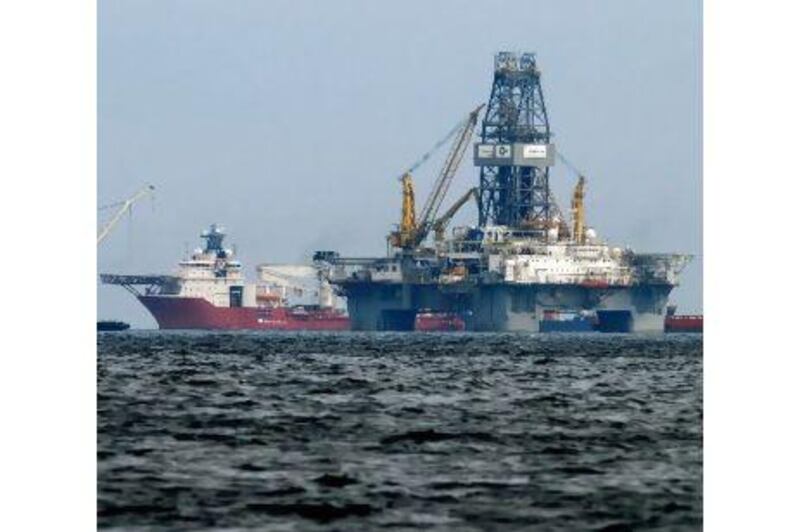AAGOTNES // A millennium after Viking ships plied the North Atlantic to establish Norse colonies as far afield as Iceland, Greenland and Newfoundland, Norwegian oil firms are continuing the national tradition of exploring new maritime frontiers.
That has propelled Statoil, the biggest Norwegian oil producer, far beyond the relatively shallow waters off Norway's coast to develop deep-water oilfields in the Gulf of Mexico, West Africa, and, recently, Brazil.
The new Viking ships assisting the Norwegian oil champion in those far-off waters include a fleet of robot submarines that are among the latest products of Norway's flourishing sub-sea oil services sector.
Many of those services firms have yards and workshops at Aagotnes, an industrial cluster near the west-coast port of Bergen that has matured over the past two decades into the world's biggest sub-sea technology centre.
Aker Solutions, a 50-year Norwegian veteran of the sub-sea services industry, expanded its Aagotnes base last year.
Dave Hutchinson, a senior vice president of Aker, said last April, as the opening of the firm's new workshops coincided with the worst of the global recession: "We know the North Sea sub-sea market will remain strong over the coming decade and this investment will enable us to offer even better support to our customers."
Almost two years later, Aker's optimism appears to be paying off.
Arne Bengt Riple, Aker's vice-president of sub-sea lifecycle services, Norway, said: "Following the downturn, business is looking up, especially in Norway and Brazil. We are expanding our geographic footprint, focusing on deep water and gas development."
Even the Gulf of Mexico drilling moratorium, imposed last year after the huge oil spill from BP's deepwater Macondo well, did not slow the rebound in demand for oil and gas sub-sea services, as producers were forced last year to search further afield to meet record global oil demand. The Macondo disaster may even have helped the sub-sea services sector, by focusing international attention on technology to improve the safety of oil and gas operations on the ocean floor.
Aker is just one of a number of firms working on new materials to improve the safety and efficiency of offshore oil and gas production at great depths.
"We are using space technology on the materials side, because there are such wide variations in temperature and pressure," Mr Riple says.
The materials Aker uses in the remote-controlled equipment it installs at deepwater well-heads has to be able to withstand immense pressures. They must also be able to handle rapid changes in temperature, from the 170°C typical of oil extracted from deep wells to the 4°C of water near the ocean floor. Such temperature drops would cause normal materials to shrink, causing leaks around joints and promoting stress fractures.
The science involved is one reason a recent Aker project at Norway's Asgard offshore gasfield represents a huge technical advance. The company has built the world's first sub-sea gas-processing plant, overcoming many potential problems to mitigate the risk of leaks.
Many recent advances in sub-sea technology are aimed just as much at enhancing shallow offshore oil operations as extending the industry's deepwater frontier. That makes them of relevance to the Gulf.
"The main driver is increased oil recovery," Mr Riple says.
Recent design improvements also aid wider applications such as complex sub-sea cables for power and electronic data transmission.
Data transmission lines are housed in protective steel tubing enhanced with high-performance carbon fibres to protect against corrosion and mechanical accidents that could sever cables.
The availability of longer, more reliable cables means that more offshore oilfields can be developed by robot equipment controlled from an onshore base. This is not only safer than a traditional offshore platform, but is also often more energy efficient and more environmentally friendly. It is preferable to provide power for offshore oil extraction from an efficient onshore power plant than from an unsophisticated generator aboard a platform.
Longer cables also mean larger clusters of offshore fields can be developed with common infrastructure. That means once a large offshore deposit has been discovered, it becomes more economical to develop the smaller reservoirs that are often found around the main deposit.
For coastal dwellers and others who find the sight of offshore oil rigs unaesthetic, there is another important advantage: fewer man-made structures to spoil the view. For oil producers, that translates into fewer complaints from local communities.
"We would all like to see the blue water. What we will see in the near future is everything sub-sea," Mr Riple predicts.





